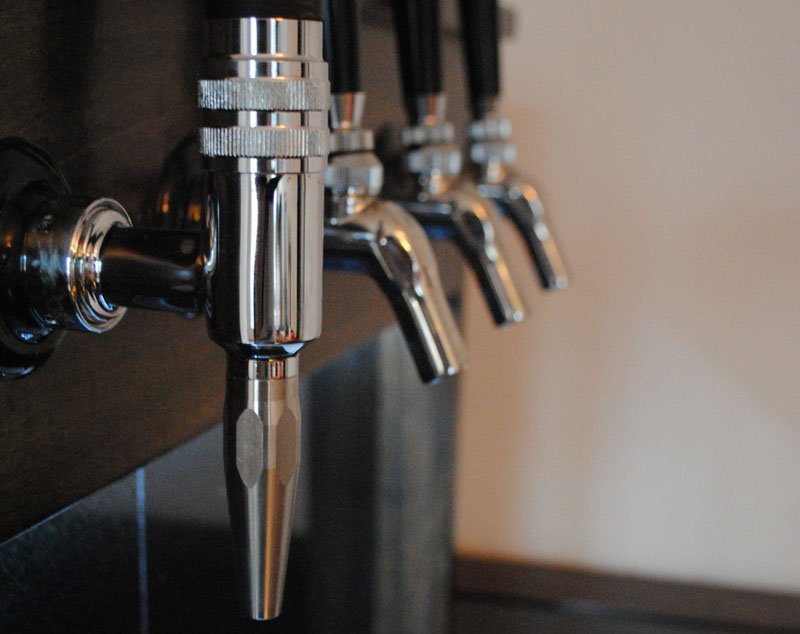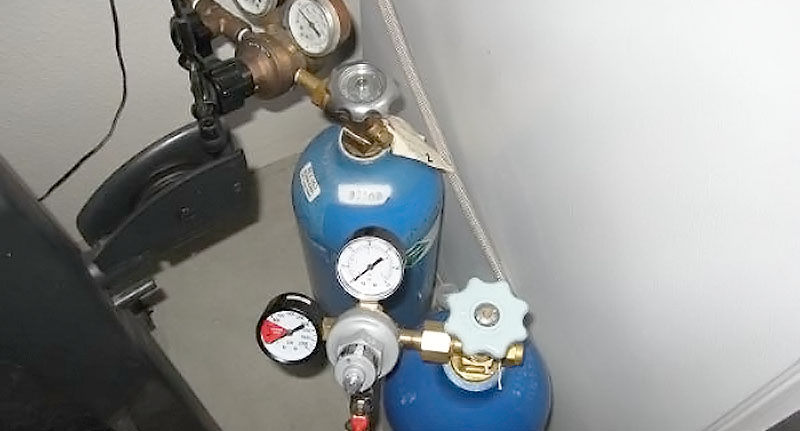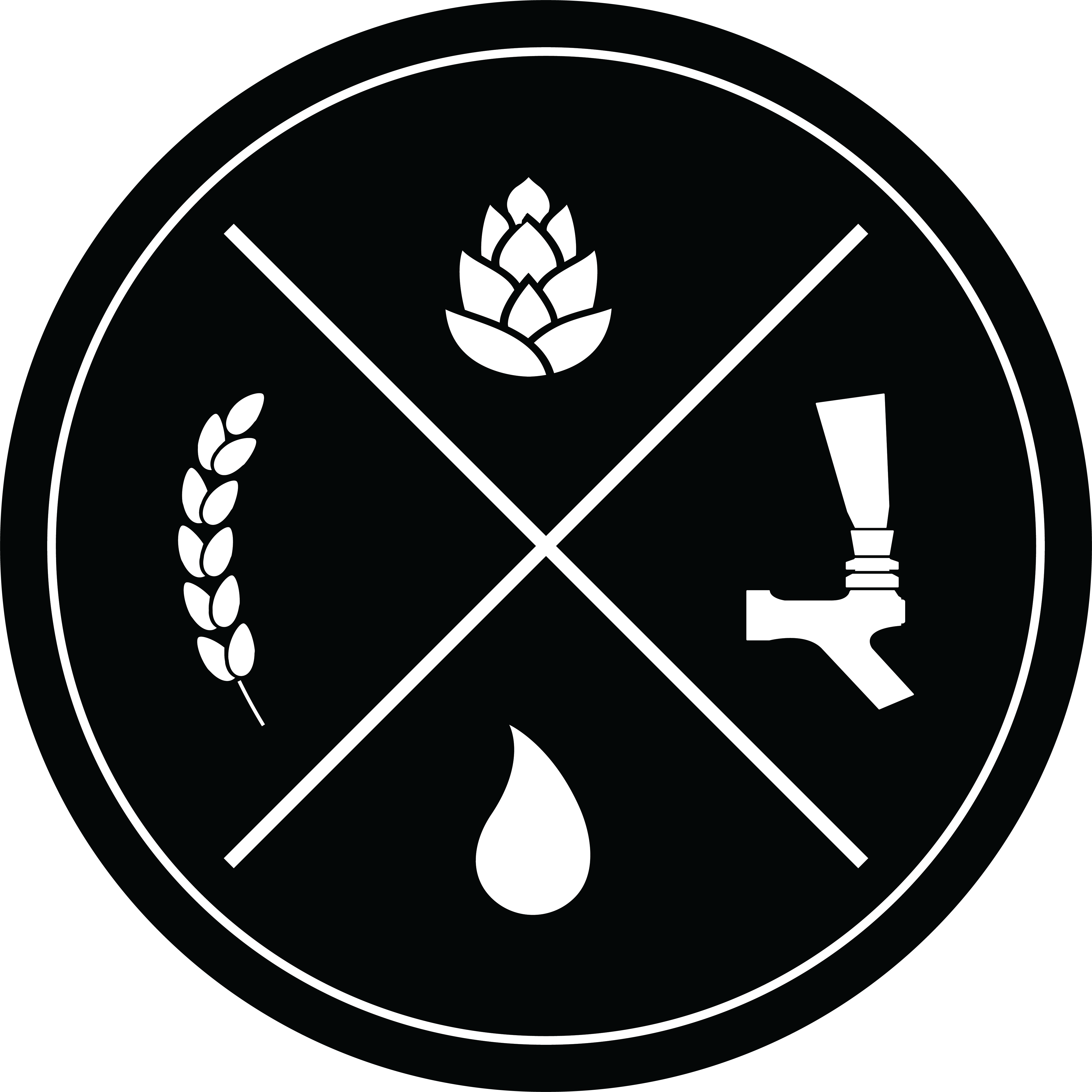Ah, stout. Black velvet in a glass, topped with a rich, creamy head you could eat with a spoon. Enthralling cascades of bubbles as the head settles, and a heavy lace left behind. Silky-smooth mouthfeel with just a tiny hint of carbonation. It sure would be nice to brew something at home that had the magical qualities of a well-pulled glass of stout. It may seem out of reach, but if you brew and condition your beer appropriately, and serve it correctly, you actually can get that same experience at home. The key to the whole thing is nitrogen gas.
What is a Nitro Pour, and When Should I Consider One?
There are a couple of things to be aware of before you pour all your beer through Nitro. If you try this with a beer that already has a rich mouthfeel, it may become even heavier, and can even feel almost oily. Partly because there’s less gas to come out of solution and bring them to your nose, aroma can be diminished – and we all know aroma and flavor are linked, so this in turn can mean an apparent reduction in flavor. And last but not least, serving on nitro will diminish the perception of hop bitterness.
This means that your crazy-aromatic, 120 IBU triple IPA is probably not the best candidate for this treatment. The best choices will be lower in alcohol and body and fairly richly flavored, preferring malt flavors to hops. Not to say those other beers wouldn’t be interesting on nitro, but this really is a method made for milder stouts.
How to Serve Your Beer with Nitrogen


Featured Product

CMBecker V3N Nitro Faucet
The CMB V3N Nitro Faucet is German Engineered faucet for dispensing Nitrogenated Cold Brew Coffee and Nitro beers like Guinness. This modern, forward seal faucet design is easier to clean and does not look out of place with your other beer faucet or your standard cold brew coffee faucet. This faucet, like other CMB V3 series faucets utilizes a forward seal piston chamber to eliminate “Sticking” issues. This is the faucet the cold brew coffee community has been waiting for! If you serve homebrewed nitrogenated beers this is also the faucet for you.
$49.95
Order Now
To serve homebrewed stout on nitro, you’ll need to begin with a kegging system, and add some components. There are bottled stouts with a nitro pour, but it’s simply not practical for homebrewers to bottle beer with the widget in the bottle and the high pressure of nitrogen required for the cascading pour.
Of course, you’ll need a stout faucet. This is a specially designed faucet that includes a restrictor plate inside. This completely blocks off the flow of beer through the faucet except for the needle streams that come through the small holes. It’s really the turbulence caused by the beer’s passage through these holes that causes the magical dense, cascading head.
In order to push the beer through these tiny holes at any kind of reasonable rate (and to generate the turbulence you need), you’ll have to push the beer much harder than you would to pour regular carbonated beer through a standard faucet. Most people pour nitro beer at around 30 PSI. And, because carbonation levels are related to storage temperature and carbon dioxide pressure, if we did this with nothing but CO2, the beer would soon be massively over-carbonated. Since the turbulence caused by the restrictor plate causes most of the dissolved gas to come out of solution, over-carbonated beer would gush impressively if served at high pressure through a stout faucet.
Clearly, then, we need to push the beer with a gas that won’t dissolve so readily in beer. Fortunately, nitrogen* has the properties we need. For ease of handling, the easiest thing to do is to add a bottle of “beer gas” to your kegging rig. Your usual gas supplier may very well sell it – they might know it as “Guinness gas” or just mixed gas for beer. What you’ll get is usually about 75% nitrogen and 25% CO2, although that may vary somewhat. You’ll also need the correct regulator for this bottle, as it will use left-handed threads. If your usual supplier looks at you oddly when you ask for these things, look for a gas supplier that specializes in beverage and tavern supply.
One optional thing that makes setting up for nitro much easier is to add a diffusion stone to the keg you intend to serve from. Do this by adding a length of tubing to the short dip tube under the gas-in post, long enough to reach the bottom of the keg, and installing an airstone on the end so that the stone sits on the bottom of the keg.
Setting Up Your System For Nitro Pours

Now, well-equipped, we’re ready to start setting up some beer for nitro pour.
First, force-carbonate your beer with carbon dioxide – but not very much. Remember that the stout faucet will cause gushing if there is too much CO2 in solution. Even the 1.5 to 2.0 volumes you would use for a British pale ale is too much; you should consult a carbonation calculator and aim for 1.0 to 1.2 volumes. In fact, freshly fermented beer kept on the cool side should contain almost enough dissolved gas that you’ll hardly have to add any at all.
Second, get some nitrogen gas into the beer. You can do this just by hooking up the chilled keg to the beer gas at 30 PSI for a couple of weeks, but if you opted for the diffusion stone, you can do this in a couple of hours. Since the gas will be injected in fine bubbles at the bottom of the keg, it will get into the beer much more quickly. Put 30 PSI of beer gas on the beer, then vent the headspace every few minutes to get more gas flowing. Do this for a half-hour or so, let it rest for a half-hour, and then do another half-hour of the vent/pressurize cycles.
Third, hook it up and serve. Pour into a tilted glass until the glass is about three-quarters full, then close the faucet and put the glass down for a minute to let the head settle a bit. Then top up so the head is just proud of the lip of the glass, and serve with pride.
Remember when you had to go to the bar for a pour like this?
*due to shipping regulations, we cannot ship nitrogen or co2 canisters filled with gas.



What beers are conducive to being served “on nitro”. The answer, in my opinion, is none. Nitro beers are solving a problem that has already been fixed. The problem of having a vessel that can’t hold enough pressure for the beer to dispense itself and stay carbonated, has already been fixed with modern packaging technology. There are breweries and bars that are now throwing nearly any beer on nitro, perhaps for novelty sake. Nitrogen has this magical ability to absolutely destroy hop aroma, so putting a hoppy beer such as an IPA on nitro is just undoing all the work the brewer did by adding in all those hops. If a nitrogenated beer needs to be drunk quickly before it goes flat, then why would someone put an 11% Russian imperial stout with coffee and cocoa and aged in bourbon barrels in nitro, unless they desire an irresponsible rate of consumption?
Comments are closed.